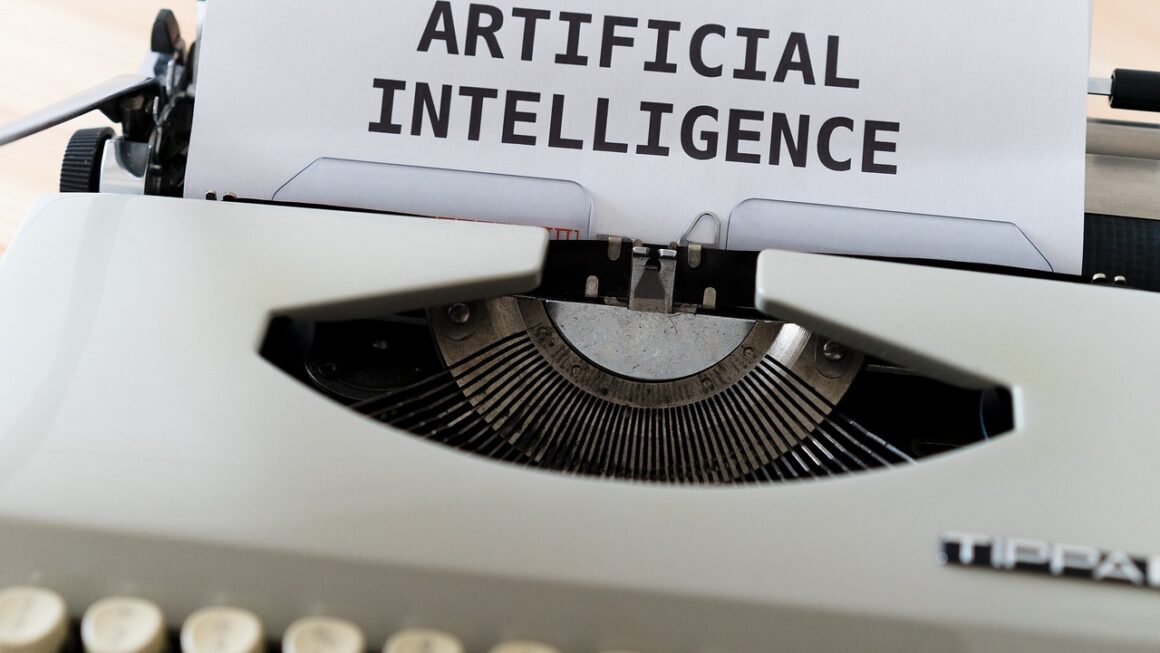Machine learning (ML) has rapidly transformed from a futuristic concept to a ubiquitous technology shaping our daily lives. From personalized recommendations on streaming platforms to fraud detection in banking, ML algorithms are powering innovations across industries. This blog post dives deep into the world of machine learning, exploring its core concepts, applications, and future trends, equipping you with a comprehensive understanding of this transformative field.
What is Machine Learning?
Defining Machine Learning
Machine learning is a branch of artificial intelligence (AI) that focuses on enabling computers to learn from data without being explicitly programmed. Instead of relying on pre-defined rules, ML algorithms identify patterns, make predictions, and improve their performance over time as they are exposed to more data. This learning process allows machines to adapt to new situations and solve complex problems with minimal human intervention.
- Key Characteristics:
Learning from data
Identifying patterns and making predictions
Improving performance over time
Adaptive and autonomous
How Machine Learning Works
The machine learning process typically involves the following steps:
Types of Machine Learning
Machine learning algorithms can be broadly categorized into three main types:
- Supervised Learning: The algorithm learns from labeled data, where the input and desired output are provided. Examples include:
Classification (predicting categories): Spam detection, image recognition.
Regression (predicting continuous values): Predicting house prices, stock prices.
- Unsupervised Learning: The algorithm learns from unlabeled data, where only the input is provided. Examples include:
Clustering (grouping similar data points): Customer segmentation, anomaly detection.
Dimensionality Reduction (reducing the number of variables): Feature extraction, data visualization.
- Reinforcement Learning: The algorithm learns by interacting with an environment and receiving rewards or penalties for its actions. Examples include:
Game playing (e.g., AlphaGo)
Robotics
* Recommendation systems
The Power of Machine Learning: Applications Across Industries
Healthcare
Machine learning is revolutionizing healthcare, offering solutions for:
- Diagnosis and Treatment: Predicting disease risk, diagnosing medical conditions from images (e.g., X-rays, MRIs), and personalizing treatment plans. For example, algorithms can analyze medical images to detect cancerous tumors with high accuracy, often surpassing human capabilities.
- Drug Discovery: Accelerating the drug discovery process by identifying potential drug candidates and predicting their efficacy and safety.
- Predictive Analytics: Predicting patient readmission rates and identifying high-risk patients for preventative care.
Finance
The financial industry leverages machine learning for:
- Fraud Detection: Identifying fraudulent transactions in real-time, preventing financial losses. ML algorithms analyze transaction patterns to detect anomalies indicative of fraud.
- Risk Management: Assessing credit risk and predicting loan defaults.
- Algorithmic Trading: Developing automated trading strategies that can execute trades based on market conditions.
- Customer Service: Powering chatbots and virtual assistants that provide personalized financial advice and support.
Marketing and Sales
Machine learning enhances marketing and sales efforts through:
- Personalized Recommendations: Recommending products and services that are tailored to individual customer preferences. Think of Amazon’s “Customers who bought this item also bought” feature.
- Customer Segmentation: Grouping customers into segments based on their demographics, behaviors, and purchasing patterns. This allows for more targeted marketing campaigns.
- Predictive Analytics: Predicting customer churn and identifying customers who are likely to make a purchase.
- Marketing Automation: Automating marketing tasks such as email marketing and social media posting.
Manufacturing
Machine learning optimizes manufacturing processes by:
- Predictive Maintenance: Predicting equipment failures and scheduling maintenance proactively, reducing downtime and costs. For example, analyzing sensor data from machines to detect early signs of wear and tear.
- Quality Control: Detecting defects in products during the manufacturing process, improving product quality.
- Process Optimization: Optimizing manufacturing processes to improve efficiency and reduce waste.
Getting Started with Machine Learning: Tools and Resources
Programming Languages
- Python: The most popular language for machine learning due to its rich ecosystem of libraries and frameworks.
- R: A language specifically designed for statistical computing and data analysis.
Machine Learning Libraries and Frameworks
- Scikit-learn: A comprehensive library for various machine learning tasks, including classification, regression, clustering, and dimensionality reduction. It’s known for its ease of use and well-documented API.
- TensorFlow: A powerful open-source machine learning framework developed by Google, particularly well-suited for deep learning tasks.
- Keras: A high-level API for building and training neural networks, which can run on top of TensorFlow, Theano, or CNTK.
- PyTorch: Another popular open-source machine learning framework, known for its flexibility and dynamic computation graph.
Online Courses and Tutorials
- Coursera: Offers a wide range of machine learning courses from top universities.
- edX: Another platform offering high-quality machine learning courses.
- Udacity: Provides nanodegree programs in machine learning and related fields.
- Kaggle: A platform for data science competitions and collaborative learning.
Example: Simple Linear Regression with Scikit-learn
Here’s a basic example of how to implement linear regression using Scikit-learn:
“`python
from sklearn.linear_model import LinearRegression
import numpy as np
# Sample data
X = np.array([[1], [2], [3], [4], [5]]) # Input features
y = np.array([2, 4, 5, 4, 5]) # Target variable
# Create a linear regression model
model = LinearRegression()
# Train the model
model.fit(X, y)
# Make predictions
new_data = np.array([[6]])
prediction = model.predict(new_data)
print(f”Prediction for {new_data}: {prediction}”)
“`
This code snippet demonstrates how to create a linear regression model, train it on sample data, and make predictions on new data using Scikit-learn.
The Future of Machine Learning: Trends and Challenges
Key Trends
- Explainable AI (XAI): Focuses on making machine learning models more transparent and understandable, addressing concerns about bias and fairness.
- Federated Learning: Enables training machine learning models on decentralized data sources without sharing the data itself, preserving privacy.
- AutoML: Automates the process of building and deploying machine learning models, making it accessible to a wider audience.
- Edge Computing: Deploying machine learning models on edge devices (e.g., smartphones, IoT devices) for faster processing and reduced latency.
Challenges
- Data Bias: Machine learning models can perpetuate and amplify existing biases in the data, leading to unfair or discriminatory outcomes.
- Data Privacy: Protecting sensitive data used for training machine learning models is a major concern, especially in areas like healthcare and finance.
- Model Interpretability: Understanding how machine learning models make decisions is crucial for building trust and ensuring accountability.
- Scalability: Scaling machine learning models to handle large datasets and complex problems can be challenging.
Conclusion
Machine learning is a powerful and transformative technology with the potential to solve complex problems and improve our lives in numerous ways. By understanding the core concepts, applications, and trends in machine learning, you can harness its power to drive innovation and create value in your respective field. As the field continues to evolve, staying informed and adapting to new developments will be crucial for success. Embracing lifelong learning and exploring the vast resources available will empower you to navigate the exciting world of machine learning and contribute to its continued growth and impact.




